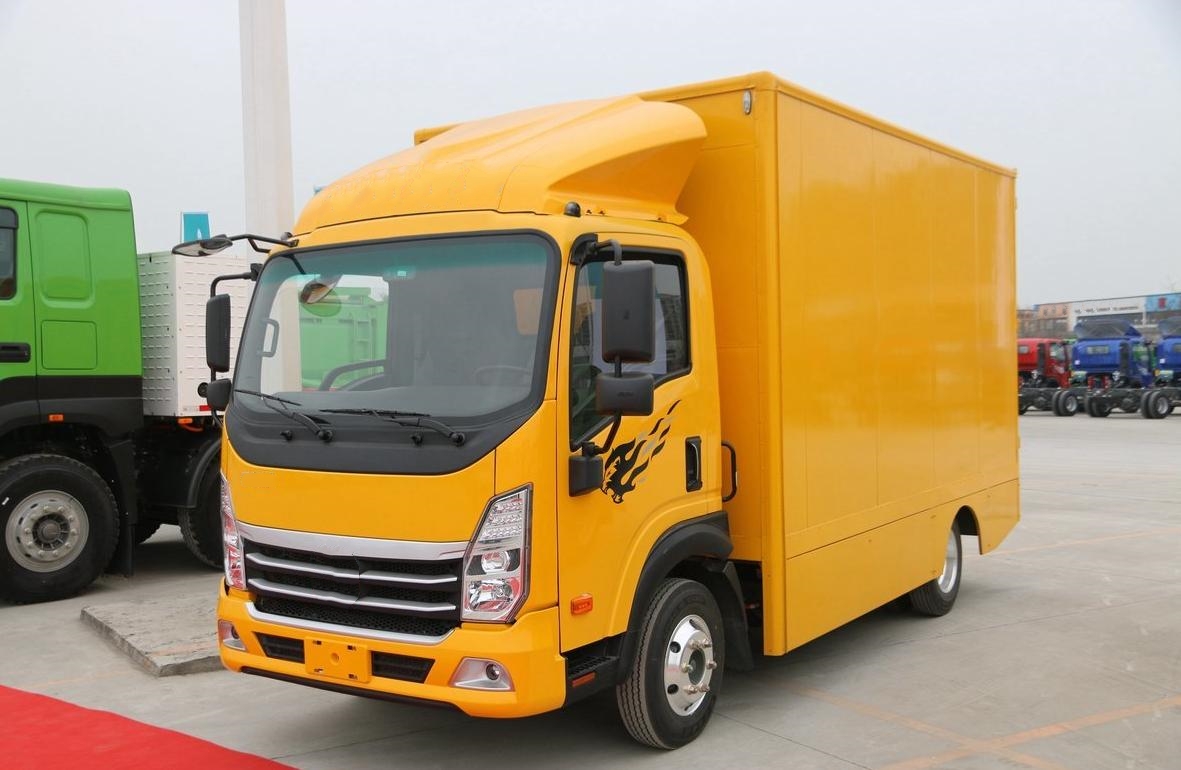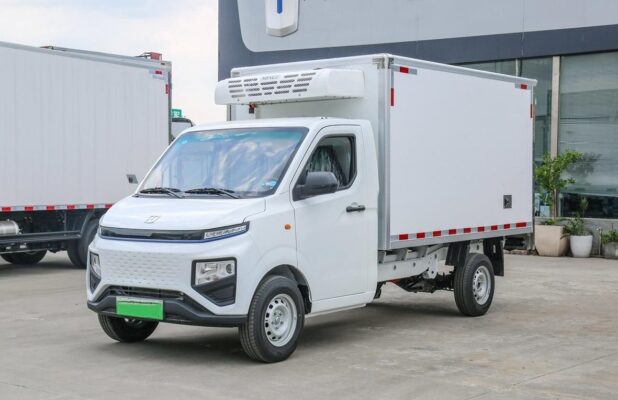Electric Truck News
Why are electric trucks batteries so heavy?
Electric vehicle (EV) batteries are a pivotal component that directly influences the performance, range, and environmental footprint of EVs. However, these batteries also contribute significantly to the vehicle’s weight. This weight is primarily due to the high energy density required to power EVs for extended ranges, as well as safety and structural considerations that ensure battery stability and longevity. In recent years, manufacturers and researchers have made substantial efforts to improve battery efficiency, reduce weight, and minimize environmental impact. In this article, we explore why EV batteries are heavy, how their weight impacts performance, ways to reduce this weight, and the future of EV battery technology.
1. Why Are EV Batteries So Heavy?
The substantial weight of EV batteries can be attributed to multiple factors, including energy density, range demands, safety features, and structural design. Let’s examine these in detail:
1.1 Energy Density and Capacity Requirements
EVs rely on batteries with high energy densities, such as lithium-ion or nickel-metal hydride batteries, to provide sufficient power. Unlike traditional vehicles that use fuel with relatively low density for its weight, EVs must carry enough energy to power the vehicle over hundreds of miles without frequent recharging. The high energy density of lithium-ion batteries allows EVs to store substantial power in a reasonably compact space. However, this comes with added weight, as storing more energy requires more battery cells, and thus, more material.
1.2 Range Demands and Battery Size
Modern consumers expect EVs to offer long driving ranges on a single charge. Meeting this demand often means designing batteries with larger capacities, which translates into additional weight. EV batteries must balance size and weight with capacity—larger batteries store more energy and offer greater range, but they also add considerable weight to the vehicle. This added weight, while essential for meeting consumer expectations of range, remains a significant challenge for vehicle design and performance.
1.3 Safety Features
EV batteries require robust safety measures to prevent hazards such as overheating, short circuits, and potential fires. To ensure safety, manufacturers include insulation layers and separators within battery cells. These components add weight but are essential for maintaining the structural integrity of the battery and protecting it during operation. Additionally, cooling systems and fire-resistant materials are often integrated into battery designs to prevent thermal runaway and enhance safety, further contributing to the battery’s weight.
1.4 Structural Design and Vehicle Stability
The structural design of an EV battery pack is crucial for stability and safety. Batteries are typically positioned along the bottom of the vehicle to lower the center of gravity, enhancing stability during driving. This positioning requires a sturdy chassis and reinforced battery casing to protect the battery cells from potential impacts. The reinforced structure not only protects the battery but also stabilizes the vehicle, particularly during cornering or high-speed maneuvers. The materials and structural design that secure the battery pack add weight to the overall vehicle, but they are essential for maintaining safety and durability.
2. Does Battery Weight Affect Vehicle Performance?
Battery weight significantly influences EV performance in several ways. While heavy batteries provide the necessary energy capacity for longer range, they also introduce challenges for acceleration, handling, and energy consumption.
2.1 Impact on Acceleration
The additional weight of an EV battery increases the vehicle’s load, which can reduce acceleration performance. Heavier vehicles require more energy to move, meaning EVs with large, heavy battery packs may experience slower acceleration times compared to lighter vehicles. However, advances in electric motor technology and vehicle design have helped offset this drawback, allowing many modern EVs to achieve impressive acceleration despite battery weight.
2.2 Influence on Suspension and Stability
Battery weight impacts the suspension system and overall stability of the vehicle. The heavy load requires more robust suspension systems to maintain vehicle stability, particularly when cornering, navigating bumps, or handling uneven terrain. EVs with lower center-of-gravity designs, made possible by placing batteries at the vehicle’s base, generally exhibit better stability. Yet, the extra weight may still affect the vehicle’s suspension and steering response, especially in tight maneuvers.
2.3 Effects on Energy Consumption and Range
Heavy batteries require more energy to propel, which can impact the vehicle’s energy consumption and range. The increased weight means the electric motor must work harder to maintain speed and overcome inertia, especially during acceleration. This demand for more power can reduce the vehicle’s overall efficiency, potentially limiting its range. As a result, many manufacturers and researchers are focused on developing lighter, high-energy-density batteries that can offer extended range without compromising weight.
3. Methods to Reduce Battery Weight
Reducing EV battery weight is crucial for improving performance, efficiency, and range. Several strategies are currently being explored to achieve this goal.
3.1 Lightweight Materials
Replacing traditional metal components with lightweight materials is a popular method for reducing battery weight. For instance, magnesium alloys and carbon fiber can substitute for heavier metals in battery casings and structural elements. These materials provide the necessary strength and durability while significantly reducing overall battery weight. Although more expensive, they are becoming more widely adopted as manufacturers aim to improve battery efficiency.
3.2 Optimized Battery Structure
Streamlining battery structure by reducing unnecessary frames and casing components can lower battery weight. By designing more compact battery modules and optimizing the arrangement of cells within the battery pack, manufacturers can reduce excess weight without compromising performance. Innovations in battery design, such as modular construction and integrated cooling channels, also contribute to lighter battery packs.
3.3 Higher-Energy-Density Batteries
Developing batteries with higher energy densities allows for more energy storage within a smaller, lighter package. Researchers are exploring alternative battery chemistries, such as solid-state batteries and lithium-sulfur batteries, which offer higher energy densities than traditional lithium-ion cells. By storing more energy in a smaller space, these high-energy-density batteries can reduce the overall weight of the battery pack, enabling lighter EVs with comparable or greater range.
3.4 Efficient Battery Management Systems (BMS)
A sophisticated battery management system (BMS) can optimize energy usage within an EV battery, enabling lighter battery designs. An efficient BMS monitors and controls the charging, discharging, and temperature of battery cells, ensuring that the battery operates within its optimal range. This can reduce energy consumption and allow manufacturers to use smaller batteries without compromising vehicle performance or range.
4. Environmental Impact of Heavy EV Batteries
The weight of EV batteries has environmental implications throughout their lifecycle, from raw material extraction to manufacturing, recycling, and disposal.
4.1 Resource Consumption and Energy Use
Producing EV batteries is resource-intensive, particularly for materials like lithium, cobalt, and nickel. The extraction and refinement processes for these materials consume significant energy and often result in environmental pollution. Heavy batteries, which require larger quantities of these resources, amplify the environmental impact, as more raw materials are needed to build high-capacity batteries.
4.2 Battery Disposal and Recycling Challenges
The disposal and recycling of EV batteries present environmental challenges. Improper disposal of old batteries can result in hazardous chemicals leaching into the soil and water, causing pollution. Additionally, recycling EV batteries is a complex process that requires specialized facilities to safely extract reusable materials without environmental harm. As EVs become more widespread, the need for efficient recycling systems and regulations to handle the end-of-life disposal of batteries is critical.
4.3 Reducing Environmental Impact through Sustainable Practices
To minimize the environmental impact of heavy EV batteries, manufacturers are exploring sustainable practices such as recycling programs, renewable energy sources in battery production, and environmentally friendly extraction methods. Developing closed-loop recycling systems, where materials from used batteries are recovered and reused in new batteries, can reduce the need for new raw materials and decrease the overall environmental footprint.
5. Future Directions for EV Battery Development
The future of EV battery technology is focused on achieving higher energy density, extended range, reduced weight, and lower costs. Several promising advancements in battery technology could reshape the EV landscape in the coming years.
5.1 New Battery Chemistries
Emerging battery chemistries, such as lithium-sulfur, lithium-air, and solid-state batteries, promise to increase energy density while reducing weight. Lithium-sulfur batteries, for example, have the potential to store significantly more energy than current lithium-ion batteries, while solid-state batteries replace liquid electrolytes with solid ones, reducing the risk of leaks and fires. These chemistries could enable lighter, longer-lasting batteries that provide greater range and performance.
5.2 Improvements in Battery Design and Manufacturing
Advances in battery design, such as modular construction and improved cell stacking techniques, can reduce weight and improve efficiency. Additionally, manufacturing innovations that streamline production processes and reduce material waste will make it easier to produce high-quality batteries at lower costs. Increased automation in battery manufacturing can also improve efficiency and consistency, resulting in lighter and more affordable batteries.
5.3 Cost Reduction and Widespread Adoption
Reducing the cost of EV batteries remains a key goal, as battery costs currently account for a significant portion of an EV’s price. As production scales up and new technologies reduce material costs, EVs will become more affordable, promoting broader adoption. Widespread use of EVs can contribute to emissions reductions and help meet global sustainability goals.
5.4 Greater Environmental Responsibility
Sustainable practices, such as improved recycling and reduced reliance on rare materials, are becoming integral to the development of EV batteries. Future EV batteries are expected to be more environmentally friendly, with lower resource demands and minimal waste. Establishing recycling standards and responsible sourcing of raw materials will contribute to a more sustainable EV industry.
Conclusion
The weight of EV batteries is a complex issue influenced by factors such as energy density, safety requirements, and structural design. While heavy batteries provide the energy needed for long-range driving, they also impact vehicle performance, environmental sustainability, and manufacturing costs. However, advancements in materials science, battery chemistry, and sustainable practices are paving the way for lighter, more efficient EV batteries. As technology continues to evolve, the future of EV batteries holds promise for enhanced performance, environmental responsibility, and affordability, contributing to the growth of electric mobility on a global scale.






